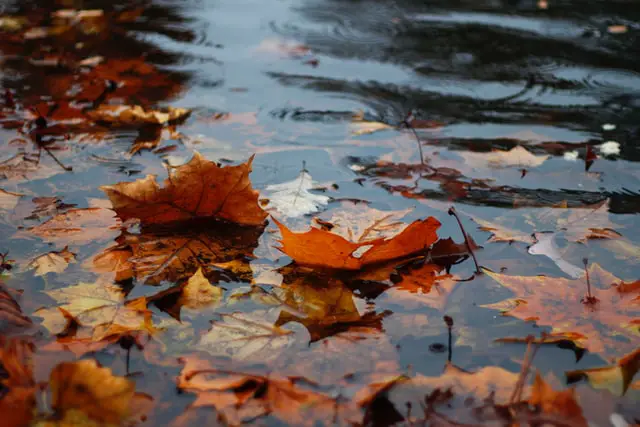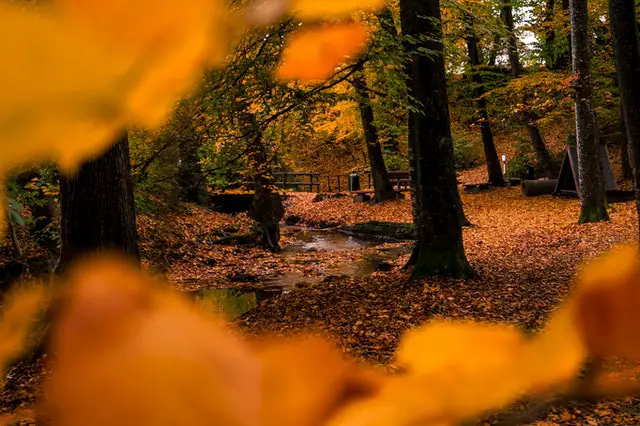While entirely natural, falling leaves do impact trout fisheries in several ways. This is most notable in slow stagnant streams and small ponds where heavy leaf falls can smother the surface making casting difficult. But the real threat occurs beneath the surface, as the leaves decompose they remove oxygen from the water causing anaerobic conditions which can be deadly to trout.
At first glance, that might not seem like a problem, but as the microbes start to decompose the decaying leaves they require huge amounts of oxygen. In waterways with already low oxygen levels, this can be disastrous to the fish life.
The situation becomes even more sereve in the fall, as the temperature drops there is a general die-off of aquatic plants. This has two effects, firstly dead plants no longer photosynthesis, which means they are no longer producing oxygen, secondary the aquatic plants themselves would start to decay further reducing the amount of oxygen available in the water.
As the temperature drops further, things become even direr once the surface starts to freeze over. This prevents the wind from mixing atmospheric oxygen into the lake and small feeder streams can stop flowing entirely.
All of these factors combine over the fall and result in a large decline in the amount of oxygen available for the fish.
What can be done to save the trout?
If you are caring for a small private trout pond. One of the easiest solutions is to prevent large amounts of leaves from being blown into the lake. Use a leaf blower to collect loose leaves, or maintain shoreline vegetation as a natural barrier. These two ways limit the number of leaves that end up on the water.
Sometimes it is simply not possible to prevent the leaves from falling into the water. If this is the case, to save the fish you need to increase oxygen levels in the pond.
The easiest way is probably to run an aerator that blows a steady stream of tiny bubbles into the water. I personally use a couple of long air stones and a little antique electric air compressor, although there are many modern aerators which probably work better. A friend uses the HIBLOW HP-80 aerator in his pond and it seems to work well.
I use the airstones in a tiny stream that flows past my childhood house. Some falls, the winter rains arrive late and the fish really start to suffer and they really appreciate the bubbles from the aerator. It is quite surprising the number of fish that gather around the aerator. Although, if the rains arrive too late the aerator alone is not always enough to save the wild trout but it has saved countless hardier species.
An alternative option is to use a fountain. The act of blowing the water into the air helps provide a boost of oxygen. Some years, we even run the garden hose and sprinkler for a few days. This brings some light relief but does use a lot of water.
If the above is occurring in a pond, rather than a stream. A more permanent solution is probably required or it might simply not be suitable for sustaining large populations of trout.
How to catch trout among thick leaves?
If there is a thick carpet of leaves on the water surface, I personally would go somewhere else to fish. They are just a nuisance to deal with.
But, yes. Trout still feed beneath a ceiling of leaves. You just need to get the lure or fly beneath them.
Fly fishing, is nearly a waste of time. The only thing which works reasonably well is a very heavy streamer. Fishing dry flies is a waste of time, and it is hard to detect bites on a nymph.
When spinning, I suggest using a heavy lure with only a single hook. That is to allow it to sink quickly beneath the leaves, and the single hook reduces the chance of snagging leaves.


